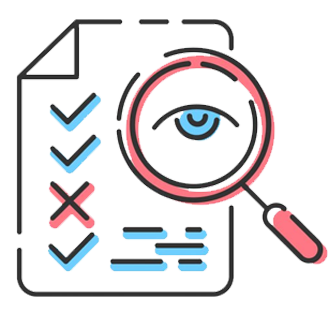
Content Is King
Increasingly, consumers don’t search for products and services. Rather, services come to their attention via social media.
– Eric Qualman
Now that you know about building your online community, you must make sure that you keep your community engaged. Staying relevant in the minds of your customers requires you to produce new content and interact socially. Do not become complacent in your social media marketing. Monitor your social media carefully, and adapt your techniques to suit your customers.
Content is King
The phrase “content is king” is used frequently by marketing experts. The meaning of this phrase, however, goes beyond simply adding new content. While it is true that new content must be added frequently, it must also be relevant to your online community. Creating relevant content requires you to understand your customers and their needs. Once you find a relevant topic, you have to communicate your opinions well.

How to Create Content:
- Upload frequently: There are always opportunities to provide content. Comment on new trends, talk about new products, respond to customers, and share inspirational stories. You should always be working on new content.
- Be relevant: Stay informed on the latest trends that that affect your audience. Writing about an event a week late will not result in many shares or comments.
- Use variety: Use both written and video content. Consumers are more likely to share a video links than written content.
- Communicate well: Make sure that your content is well written and has a personable tone. Check that videos are edited properly. Failure to double-check your content can lead to miscommunications.

Blog and Interact
Blogging is now considered essential to Internet marketing. Fortunately, you do not have to be a talented writer to have an effective blog. Video blogs are gaining popularity, and many companies mix text and video. Once you find a comfortable blogging style, you must blog frequently to maintain followers. People will stop checking a blog that is not updated regularly. While you must blog consistently, you do not have to write an essay for each entry, so do not panic about finding the time to blog. You may use short, concise entries. While you should be responsible for a majority of the content, you may invite employees to be guest bloggers or share stories that you find interesting.
Once blogs are shared, you have an opportunity to interact with your audience. Replying to customer comments is the obvious method of interaction. You may also interact with your audience by asking for comments. For example, a blogger might ask for advice from readers. Regardless of how you come to interact with customers, remember to stay on topic and be polite. The goal of interaction is to create a dialogue, not an argument.

Webinars
Webinars are basically seminars that take place online. Done correctly, they have the power to increase your brand and engage your customers. Any company that provides expertise in an area can benefit from hosting a webinar. Webinars are growing in popularity because they allow customers to see and interact with leading experts, and they are an excellent way to reach large groups of people with little expense to the company. Traditional seminars require paying for a location, materials, equipment, and other expenses that webinars do not incur.
There are different types of webinars. They may be free or paid, and they can cover a variety of topics.
Types of Webinars:
- Meetings
- Tutorials
- Presentations
- Trainings
Regardless of the type of webinar you choose, you must be prepared and professional. If you choose to host webinars, create a schedule and advertise them on your social media sites. There are plugins and webinar services available that will help you host webinars.

Constant Monitoring
Social media requires constant monitoring. However, monitoring social media is a complex task that requires the appropriate tools. Fortunately, there are free tools such as Twitter Counter and Google Analytics Social Reporter are available to help track the information. Some companies may choose to purchase programs or outsource this task. The information gathered is interpreted to show how customers respond to your brand.
The goal of constant monitoring is to handle unflattering information before it gets out of hand. If untrue or inappropriate information about the company makes its way through social media, you must address it quickly.
- Put an end to rumors with the truth.
- Address customer complaints fairly and directly.
- If the company is in the wrong, show that changes have been made.
Remember not to appear defensive or desperate. Keep the tone calm and respectful. Even if your company is under attack, you must personify your brand to the public. Anger and panic will not help your public image.
Practical Application
A customer of Owl Designs complained on the blog that a $25 figurine was broken when she purchased it, and she wanted her money back. Sarah, the owner of the company, did not believe the customer and chose to ignore the complaint. The complaint was repeated on other social media sites. Soon, other customers began to question the company’s merchandise and policies. Sarah found herself inundated with complaints on behalf of this customer. Even after she issued the refund, it took some time for the negative views of the company to die down.





